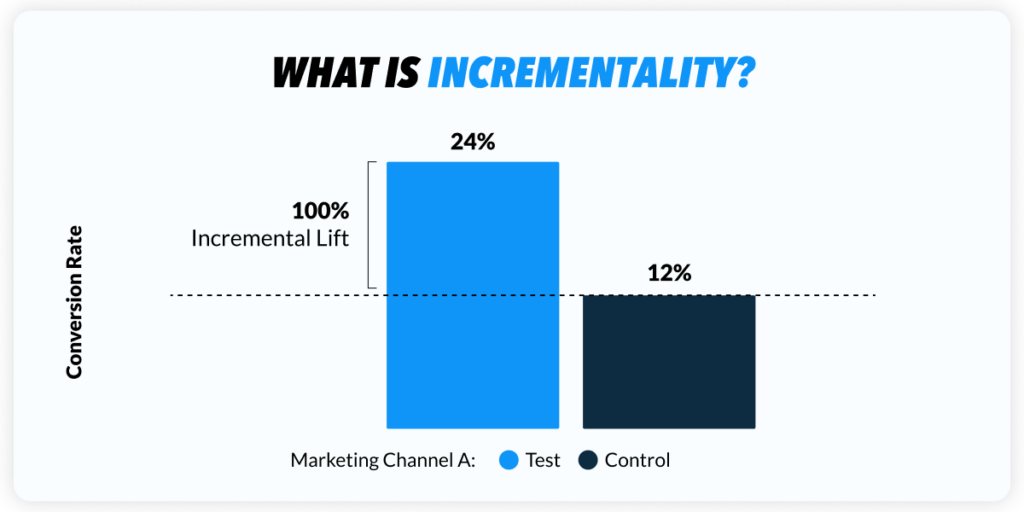Blog: Incrementality Testing: How to Measure True Marketing Impact
Table of Contents
What If You Turned Off Your Marketing…and Nothing Changed?
Incrementality Testing Exposes Wasted Ad Spend.
You’re under pressure to maximize every marketing dollar. But that’s pretty much impossible when the metrics you rely on don’t actually tell you what’s impacting revenue.
Click-through rates. Conversion numbers. ROAS dashboards. They might look solid on paper, but they don’t answer the most important question: Is your marketing actually driving new customers—or just capturing demand that would have happened anyway?
This is where incrementality testing comes in.
It’s a measurement approach that separates real impact from vanity metrics, so you can invest where it truly matters, and stop wasting money on campaigns that only look good in a spreadsheet.
What Is Incrementality Testing?
Incrementality testing is a way to measure whether your marketing efforts are genuinely creating new revenue—or just taking credit for it. It answers a simple yet critical question:
What would happen if you turned off a marketing campaign’s budget?
Here’s the basic idea:
If you turned off your ad campaign and your sales stayed the same, that campaign wasn’t doing much. If sales drop, it means your marketing was driving true, incremental value.
In simple terms:
- Incremental impact = Marketing drives sales that wouldn’t have happened otherwise.
- No impact = Marketing is claiming credit for sales that were already on the way.
You run a controlled experiment—some people see your campaign (the test group), others don’t (the control group). Then you measure the difference in performance between the two. That gap? That’s your incrementality.

Why Mid-Market Marketers Need Incrementality Testing Now
Big brands have been running these tests for years. It used to require massive budgets and in-house data science teams. But not anymore. Today’s tools make it possible for mid-market teams to tap into the same strategies without the heavy lift.
Here’s why it’s a game-changer for you:
- Eliminates wasted spend: Stop pouring budget into campaigns that don’t create new demand.
- Improves budget allocation: Identify the channels and tactics driving true growth.
- Proves marketing’s value: Show your CFO exactly how your efforts impact revenue.
- Future-proofs your strategy: Prepare for a cookieless world by moving beyond outdated attribution models.
How Incrementality Testing Works
It’s all about controlled experiments. Here’s a simplified breakdown:
Incrementality testing might sound complex, but it follows a clear, straightforward process:
- Create test and control groups.
Some users see your ads. Others don’t. - Run your campaign.
Keep everything else the same. - Compare performance.
Look at revenue or conversion differences between the two groups. - Get clear answers.
If the test group performs better, your marketing had an incremental impact. If not, you’ve got some budget to reallocate.
Think your top-performing campaigns are driving real growth? Think again.
Some of the highest-performing campaigns on your dashboard might actually be your worst investments. They show up strong in last-click or platform attribution—but aren’t creating new demand. Incrementality testing cuts through that noise.
Move Beyond Guesswork. Start Investing Smarter.
If you’re still relying on outdated attribution models, you’re probably overspending in the wrong places. Incrementality testing gives you the clarity to optimize your strategy—and defend your budget with confidence.
At Silverback, we help mid-market marketers tap into enterprise-level measurement to make smarter, faster decisions.


